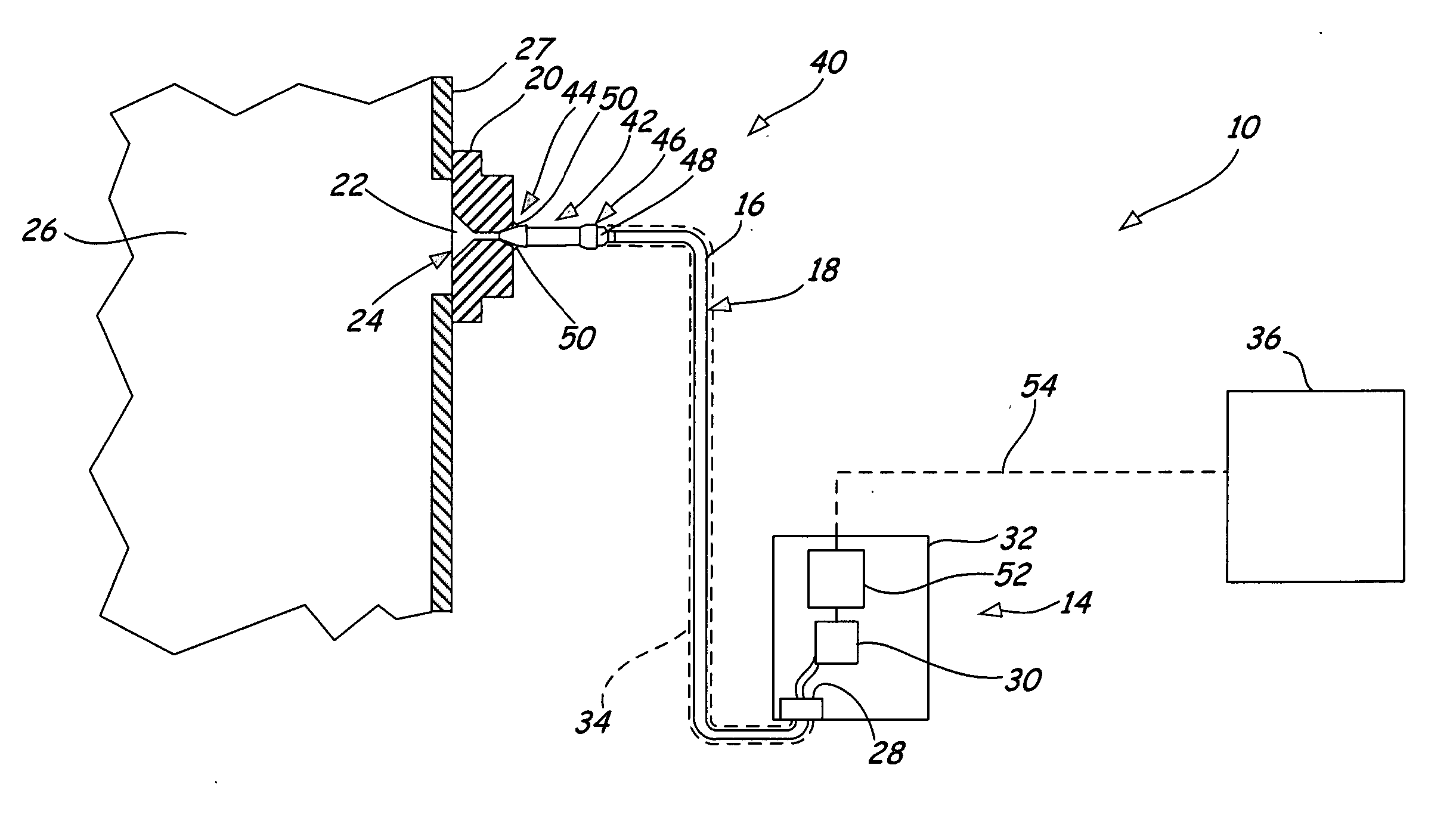Capillary weld extension with thermal isolation
a thermal isolation and capillary weld technology, applied in the direction of branching pipes, fluid pressure measurement, instruments, etc., can solve the problems of ultra-pure materials outgasing, corrosive construction of remote seal systems, and high temperature outgasing of gas into fill fluid, so as to prevent capillary contamination
- Summary
- Abstract
- Description
- Claims
- Application Information
AI Technical Summary
Benefits of technology
Problems solved by technology
Method used
Image
Examples
Embodiment Construction
[0018]FIG. 1 shows a flush mount remote seal assembly 10 (which may be a “flanged-flush” style or a “pancake style”). Generally, the remote seal assembly 10 includes a remote seal 12 coupled to a transmitter 14 by a capillary tube 16, which is filled with a fill fluid 18. The capillary tube 16 is generally provided with capillary fittings on each end for connecting with a capillary opening (not shown) on the remote seal 12 and with a capillary connection (not shown) on the transmitter 14.
[0019] The remote seal 12 generally includes a housing (flange) 20, which defines a cavity 22. A diaphragm 24 extends across the cavity 22 in order to isolate the remote seal from the process fluid 26. The housing 20 may be provided with a fill fluid opening (not shown) for delivering the fill fluid 18 into the cavity 22 and the capillary tube 16 under a vacuum pressure. Additionally, openings (not shown) may be provided on the housing (flange) 20 for attaching the remote seal 12 to a conduit 27, a...
PUM
| Property | Measurement | Unit |
|---|---|---|
| outgassing temperature | aaaaa | aaaaa |
| temperature | aaaaa | aaaaa |
| temperature | aaaaa | aaaaa |
Abstract
Description
Claims
Application Information
 Login to View More
Login to View More - R&D
- Intellectual Property
- Life Sciences
- Materials
- Tech Scout
- Unparalleled Data Quality
- Higher Quality Content
- 60% Fewer Hallucinations
Browse by: Latest US Patents, China's latest patents, Technical Efficacy Thesaurus, Application Domain, Technology Topic, Popular Technical Reports.
© 2025 PatSnap. All rights reserved.Legal|Privacy policy|Modern Slavery Act Transparency Statement|Sitemap|About US| Contact US: help@patsnap.com



